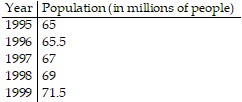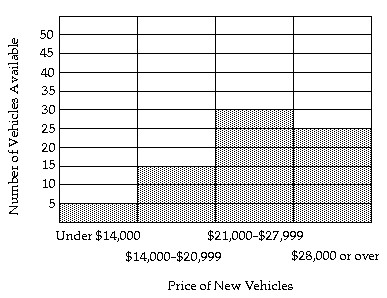Find the first five partial sums of the given series and determine whether the series is convergent or divergent. If it is convergent, then find its sum.
A. 0.6667, 0.8, 0.8571, 0.8889, 0.9091; divergent
B. 0.1667, 0.2083, 0.225, 0.2333, 0.2381; convergent; 0.25
C. 0.1667, 0.2083, 0.225, 0.2333, 0.2381; convergent; 0.2381
D. 0.1667, 0.2083, 0.225, 0.2333, 0.2381; divergent
Answer: B
You might also like to view...
Solve the problem.The table shows the population of a city over the past five years. We used this data to develop the quadratic equation
We used this data to develop the quadratic equation  , which models the population of the city y in millions in the year x, where x = 0 represents 1995, x = 1 represents 1996, and so on. Use the model to find the estimated population in the year 1997.
, which models the population of the city y in millions in the year x, where x = 0 represents 1995, x = 1 represents 1996, and so on. Use the model to find the estimated population in the year 1997.
A. 66,822,000 B. 1,490,000 C. 1,490,000,000,000 D. 65,538,000
Find the nth term and the indicated term of the arithmetic sequence {an} whose initial term, a, and common difference, d, are given.a1 = 0; d =  an = ?; a28 = ?
an = ?; a28 = ?
A. an =  (n + 1); a28 =
(n + 1); a28 = 
B. an =  (n - 1); a28 =
(n - 1); a28 = 
C. an = 4(n - 1); a28 = 27
D. an =  n; a28 = 7
n; a28 = 7
A new car dealership has taken an inventory of the vehicles it has in stock. Below is a histogram indicating the number of vehicles in stock in certain price ranges. Use the histogram to answer the question. How many vehicles does the dealership have in stock that are priced at $28,000 or over?
How many vehicles does the dealership have in stock that are priced at $28,000 or over?
A. 25 vehicles B. 5 vehicles C. 6 vehicles D. 30 vehicles
Express in standard notation.8.033 × 10-3
A. 8033 B. 0.0008033 C. 0.08033 D. 0.008033